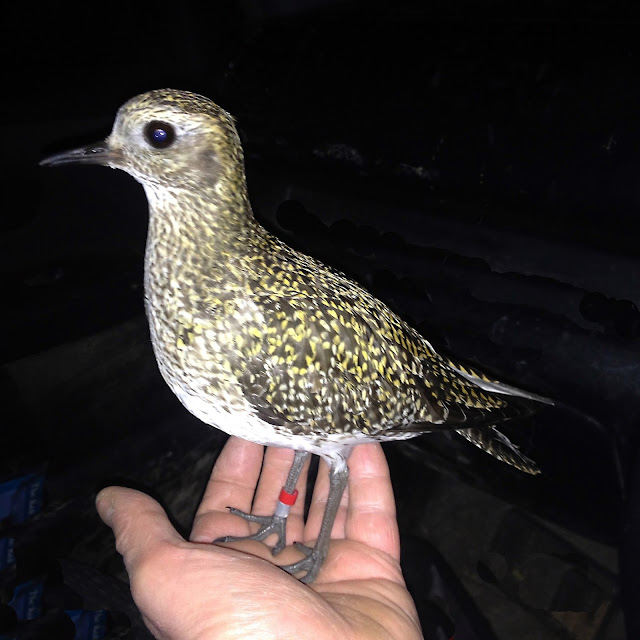On 8th March Paul Roughley and I paid a return visit to the Montgomeryshire Wildlife Trust's Dolydd Hafren Reserve on the River Severn between Newtown and Welshpool. MWT have kindly agreed to allow us to catch birds at this important staging area and numbers since our previous visit, just 12 days earlier, had almost doubled to around 80 birds. Eleven more birds were caught and colour-ringed and at least 3 other colour-ringed birds were present and identified. A total of 62 Curlews have now been individually colour-ringed here since March 2015 with two birds identified at local nesting sites in 2015 and two others re-sighted at distant wintering locations in Devon and Cornwall.

For the past 2 seasons I have, thanks to funding from the Ecology Matters Trust, had two satellite-tags (supplied by Microwave Telemetry) ready to be deployed on local breeding Curlews in order to investigate foraging range and habitat use around nest sites. Because of strict rules and guidance from the BTO on what percentage of a bird's body-weight it can safely carry, these tags' use has been specifically restricted to larger birds weighing over 800 grams (in effect meaning that they had to be fitted to large females). Sod's Law being as it is the only two birds I'd managed to catch at nest-sites were both males. I have been reluctant to fit them to birds caught at winter roosts on the coast as many of the Curlews here are probably continental migrants. Given that the tags won't last for ever, and as much of my time is now spent in Shropshire working on a Curlew project for the Stiperstones and Corndon Hill Country Landscape Partnership Scheme, I decided not to delay any further and to deploy them on the two largest birds caught on that night and just hope that they were both local breeders within our study area!

Two of Mother Nature's natural wonders and nearly £7,000 of man-made technological excellence combined! A pair of satellite-tagged female Curlews immediately after their release. Yes, the one on the right is tagged as well!
The first location received, a day or two later, was surprising to say the least and doesn't bode all that favourably! The first female had already moved over 50km due west and was enjoying the facilities at another of MWT's reserves at Cors Dyfi at the head of the Dyfi Estuary! I'm hoping she has just taken temporary umbrage and will soon return to the Severn Valley to nest - but who knows! The other female is presently just north of Welshpool. It will be extremely interesting to follow their progress over the next couple of months and I'm currently trying to work out how to make regular updates on the movements of these two birds freely available to a wider audience - watch this space!
Here is a map of the last transmitted location for both of these larger than average ladies!






